Praetorium Meaning in the Bible: Trial and Authority
In the Bible, ‘praetorium‘ refers to the official residence and administrative center of a Roman governor or high-ranking official, serving essential roles in judiciary and military operations within Roman provinces. Significant biblical events, such as Jesus’ trial before Pontius Pilate (Matthew 27:27) and Paul’s detainment (Acts 23:35), took place within these structures.
These references underscore the socio-political dynamics of Roman-occupied Judea and the juxtaposition of earthly authority against divine justice. The prateorium serves as a pivotal backdrop for understanding key theological and historical themes in the New Covenant.
Exploring further reveals deeper insights into its symbolic and contextual significance.
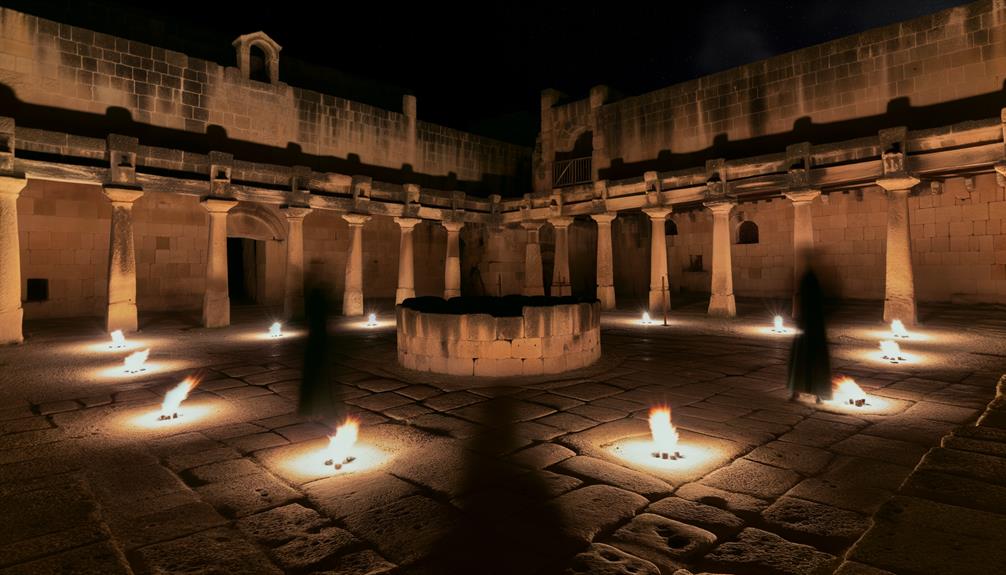
Key Takeaways
- The praetorium was the official residence of a Roman governor or high-ranking official.
- It served as the judicial center for legal disputes and trials, including Jesus’ trial before Pilate.
- The praetorium was also a military headquarters, important for strategic planning and troop management.
- Biblical references to the praetorium in Matthew, Mark, and Acts highlight its role in key events and trials.
Historical Context of Praetorium
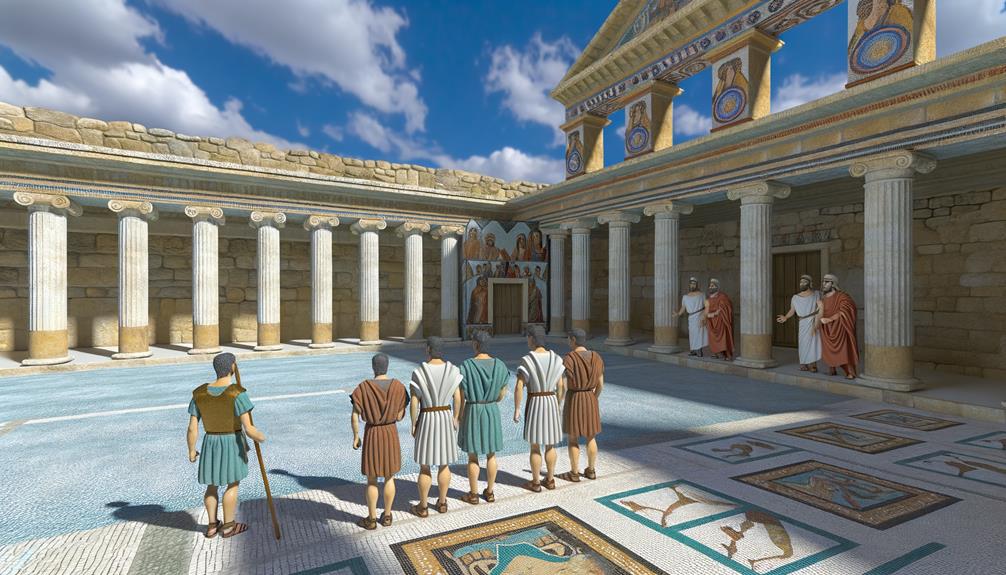
The term ‘praetorium‘ in the Bible historically refers to the official residence or headquarters of a Roman governor or high-ranking official, often serving as the administrative center of authority in a province.
This term appears in the New Covenant, particularly in the Gospels and Acts, providing a backdrop for significant events. For instance, Jesus was brought to the praetorium during His trial before Pontius Pilate (Matthew 27:27).
Understanding the praetorium’s role helps elucidate the socio-political dynamics of Roman-occupied Judea. It highlights the intersection of Roman legal authority with local governance.
The praetorium functioned not merely as a physical space but as a symbol of Roman imperial power, influencing local judicial and administrative proceedings within the provinces.
Praetorium in Roman Governance
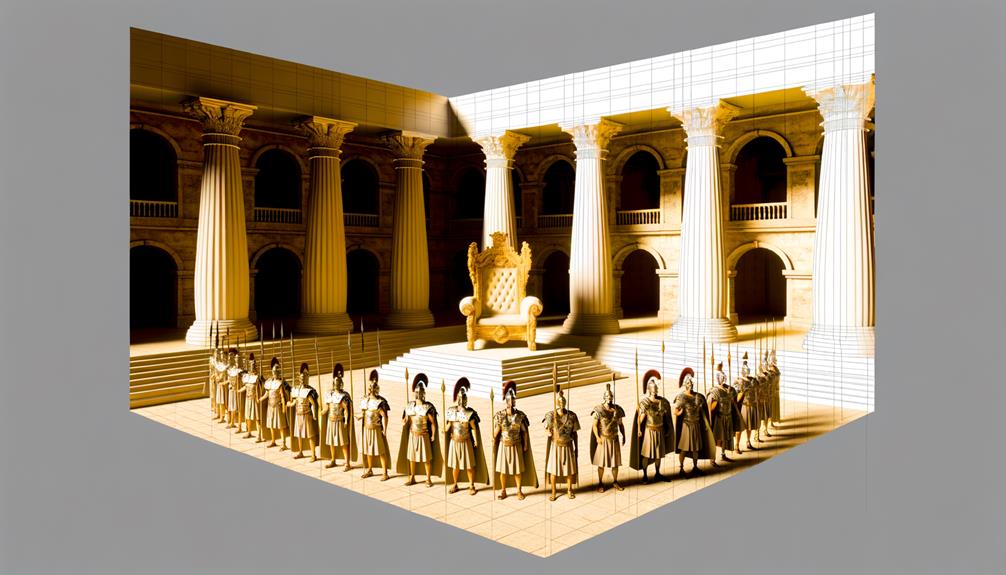
Understanding the praetorium’s role within Roman governance requires an examination of its function as a central hub for the administration of justice and military command. This multifaceted structure was pivotal in ensuring the smooth operation of the Roman state machinery.
The praetorium served several critical purposes:
- Judicial Center: It was where legal disputes and cases were adjudicated by Roman officials, reflecting its integral role in maintaining law and order.
- Military Headquarters: As the command center for military operations, it facilitated strategic planning and troop management.
In essence, the praetorium was indispensable in consolidating Roman authority and governance.
Biblical References to Praetorium
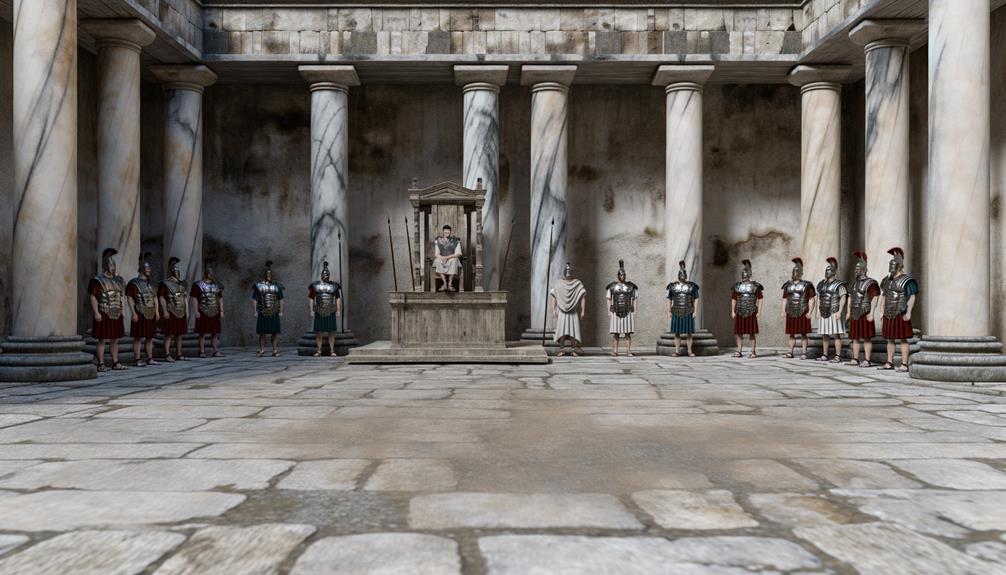
Several passages in the New Scriptures make reference to the praetorium, indicating its significance in the context of Roman authority during the period.
For example, in Mark 15:16, the praetorium is described as the place where Roman soldiers gathered to mock Jesus. Similarly, in Acts 23:35, Paul is held in Herod’s praetorium while awaiting trial.
These references underscore the praetorium’s role as a central location for judicial and military activities. By mentioning the praetorium, the biblical texts provide a vivid backdrop of Roman governance and its pervasive influence.
Such mentions help readers understand the socio-political environment of the time, highlighting the intersection between Roman authority and key New Scriptures events.
Jesus’ Trial at the Praetorium
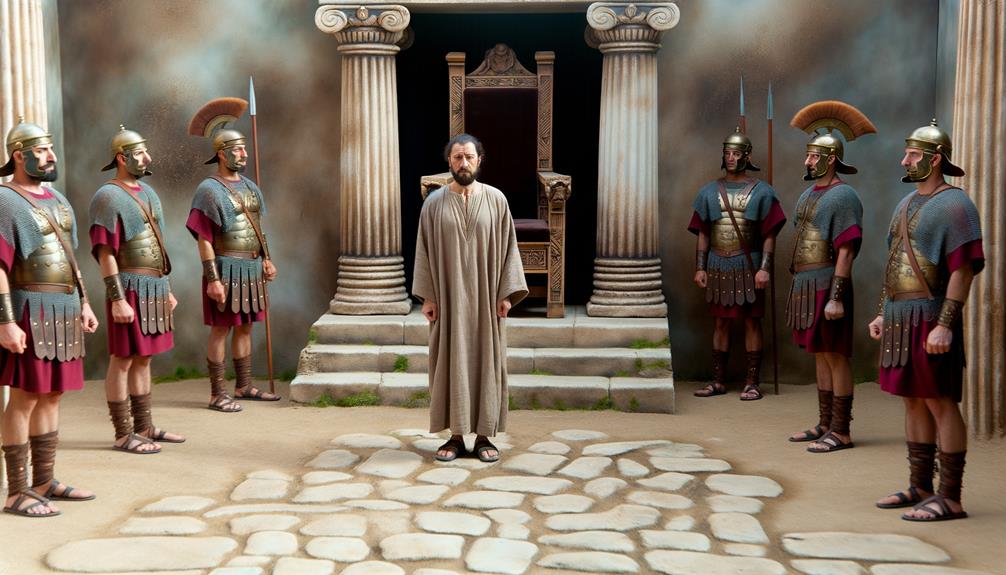
Analyzing the praetorium’s role in Jesus’ trial reveals the intricate dynamics of Roman judicial proceedings and the profound implications for early Christian narratives.
The praetorium, serving as the governor’s headquarters, became the stage for pivotal events that shaped Christian theology. Pontius Pilate’s interrogation of Jesus underscores the tension between Roman authority and Jewish leadership.
The setting highlights several key elements:
- Judicial Authority: The praetorium was where Roman legal authority was exercised, signifying the power dynamics at play.
- Public Spectacle: Jesus’ trial in this prominent location guaranteed maximum visibility and impact on the populace.
This context is essential for comprehending the trial’s historical and theological significance.
Symbolic Interpretations of Praetorium
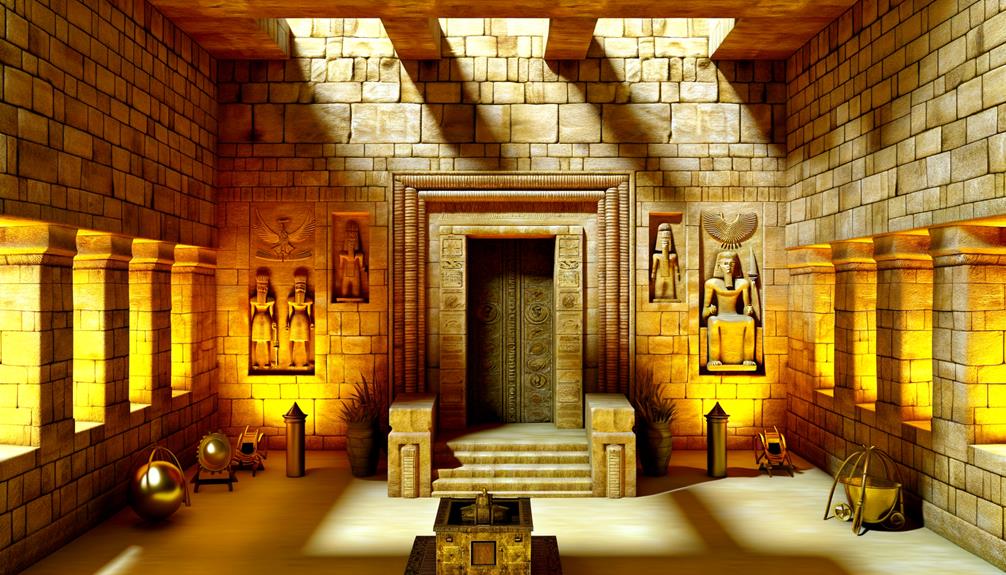
The praetorium, beyond its historical and judicial functions, holds deep symbolic interpretations that illuminate the intersection of political power and spiritual authority in biblical narratives. This setting where Jesus was tried symbolizes the earthly powers that oppose divine mission. The praetorium represents the clash between temporal governance and eternal kingdom, highlighting the tension between justice administered by human institutions and the ultimate justice of God.
| Symbolism | Description | Biblical Context |
|---|---|---|
| Political Power | Represents Roman authority and control | Trial of Jesus by Pontius Pilate |
| Spiritual Authority | Jesus embodying divine kingship | Jesus’ silent endurance of injustice |
| Conflict of Domains | Earthly vs. heavenly justice | The sentencing of an innocent man |
These symbolic interpretations enrich our understanding of the biblical text and its theological implications.
Conclusion
The praetorium, a term deeply rooted in Roman administrative and military structures, emerges in biblical narratives as a significant location, particularly during the trial of Jesus.
Significantly, one-third of the New Scripture references to the praetorium pertain to this event, underscoring its importance in Christian theology.
This confluence of historical and religious contexts invites a deeper exploration of the term’s multifaceted role, reinforcing its enduring symbolic resonance within both ancient and contemporary scholarship.






